This article was published in 2015 by Avispa Midia. While the article is nearly 8 years old, it describes well the environment and ethos of unabated extraction that drives the current dispossession and violence in the Mexican Southeast.
Renata Bessi and Santiago Navarro F.
At least 200 types of metals are required to produce a cell phone. Titanium is one of them. It is a metal that is as important for telecommunications as it is for warfare, strategic in the arms, aeronautics, naval, nuclear engineering and high-tech equipment industries. The largest consumers of titanium are the United States, the European Union, Japan and China.
Mexico is one of the five Latin American countries where titanium has been proven to be found, as well as Brazil, Paraguay, Chile and Peru. The Mexican Secretary of the Economy (SE) maintains that Mexico will be able to meet a large part of the world demand for titanium, confirming its existence in the sub-soil of Chiapas, in southern Mexico, the same state that has seven of the nine most representative ecosystems in Mexico, located on lands that hold reserves of 13 metals coveted worldwide, among them gold, silver, copper, zinc, iron, lead and titanium.
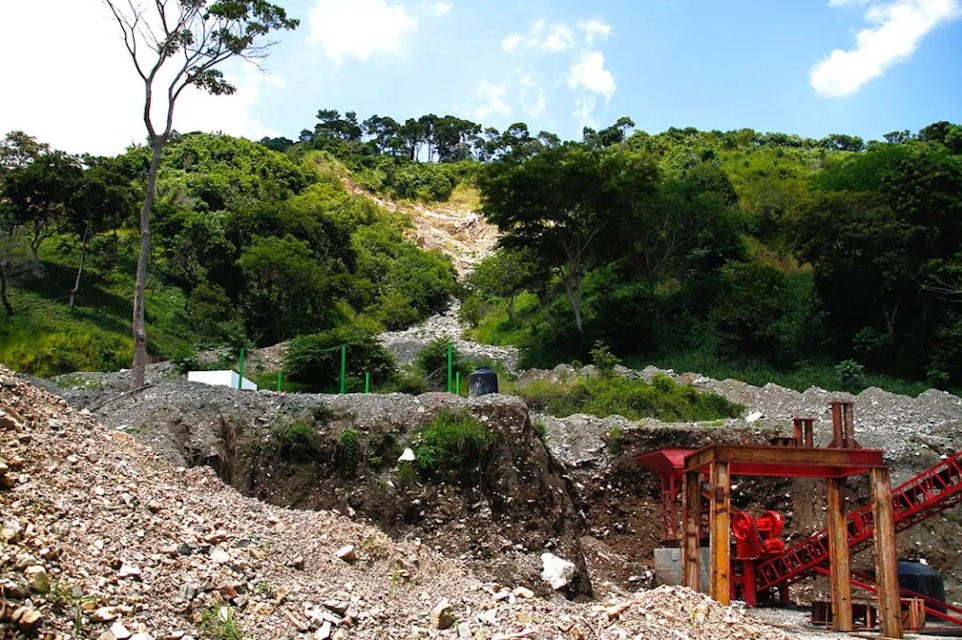
According to the Mexican government’s Integral Mining Administration System (SIAM) and Infomex, there are 99 current concessions granted by the federal government in the state of Chiapas in 2015, with exploitation permits until the years 2050 and 2060. Around 1,57,81 million hectares of peasant and indigenous lands – equivalent to 14.20% of the state – are under concession.
“There are, however, many more hectares that are waiting to be concessioned, since there are many minerals throughout the state. There are also suspended concessions, at rest and others that are in force that do not mean that they are being exploited at the moment. And we also know that there is a lot of illegal exploitation, not accounted for by the state”, affirms Gustavo Castro Soto, researcher of the civil association Otros Mundos.
The concessions are granted mainly to 4 foreign companies, according to Otros Mundos data. Three of them are Canadian: Linear Gold, now called Brigus Gold, BlackFire, Riversides Resoures Inc. and a Chinese company called Honour Up Trading.
Titanium: geostrategic importance
Alton D. Slay, a U.S. general in charge of the Air Force Systems Command in 1980, warned his country’s congress, of a national security issue, the dependence on at least 40 strategic minerals. Titanium is one of them, present in areas of current conflict such as Ukraine and Syria, and is one of the metals on which the U.S. today depends for 70% of its imports. Russia is the second country in the world with the second largest titanium reserves, after China. The Russian corporation VSMPO-AVISMA is the world’s largest producer of titanium, titanium ingots and all kinds of intermediate products made of titanium alloys, as well as large aluminum articles, semi-finished parts made of galvanized steel and nickel superalloys.
The products developed by this corporation enable it to become a supplier to 300 companies in 48 countries, including such world leaders in aircraft engineering as Boeing, Airbus, SNECMA, Rolls Royce and Pratt & Whitney. Russian titanium alone meets the demand of aerospace companies by 40% for Boeing, 60% for Airbus, and 100% for Embraer.
Titanium in the Chiapas Reserves
Most of the concessions in the state of Chiapas are located in the Sierra Madre de Chiapas and its Pacific coast. Of the 99 concessions issued this year 2015, 44 are in the region known as Soconusco, of which at least 22 have titanium extraction as their main objective.
“The 99 concessions are mainly located in the coastal region of Chiapas, in the Soconusco region, from Arriaga to Tapachula. This is the focus of attention of the mining companies, since there is talk of large deposits of this metal along this entire strip. But it is also an area of great biodiversity,” says Salvador Hernández Gutiérrez, of the Frente Popular en la Defensa del Soconusco 20 de Junio and member of the Red Mexicana de Afectados por la Minería (REMA) (Mexican Network of People Affected by Mining).
At first glance, one can appreciate the immense landscapes and biodiversity that make up the Soconusco region. Any farmer who has contact with these lands would immediately know that they are very fertile lands. Fresh water, so scarce in many Mexican states, flows everywhere. According to the Regional Development Program for the Soconusco region, there are six continuous ecological reserves in this area, three state reserves: El Cabildo-Amatal, El Gancho-Murillo and Cordón Pico El Loro-Paxtal, and three federal reserves: La Encrucijada-Volcán, Tacaná and El Triunfo.
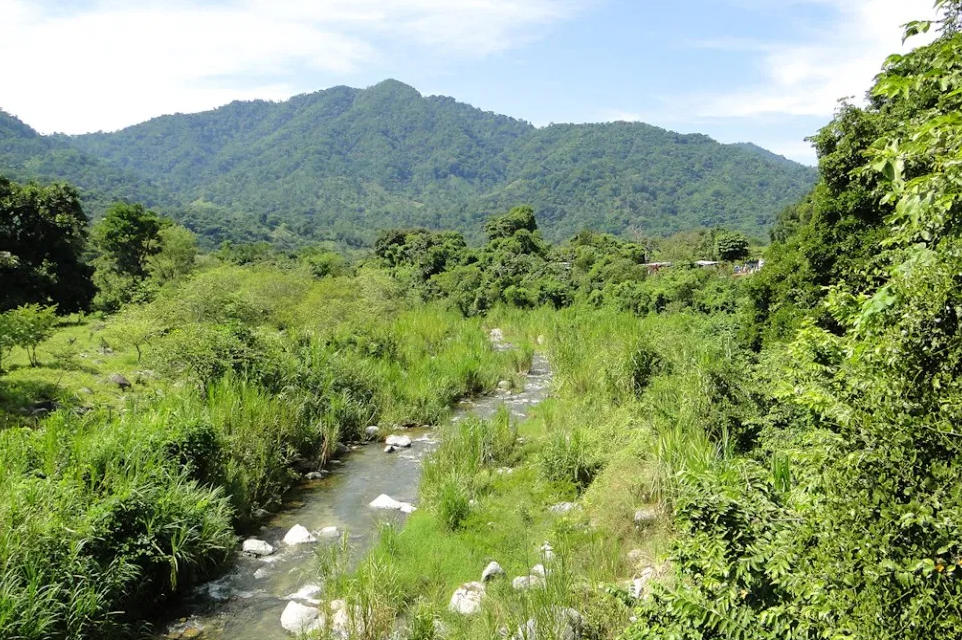
In the Encrucijada Biosphere Reserve, for example, there are mangroves up to 35 meters high, considered the tallest in North and Central America. Studies conducted by the Colegio de la Frontera Sur (ECOSUR) and the Institute of Natural History and Ecology of the State of Chiapas confirmed that there are 69 species of mammals in the reserve, 15% of the national total (477) and 33.8% of the mammals in the state of Chiapas (204). There are also a large number of wildlife species: 306 birds, 45 reptiles, and 13 amphibians.
El Cordón Pico El Loro-Paxtal protected area is located between two mountain massifs of the Sierra Madre de Chiapas, within the Mesoamerican-Chiapas Corridor, linked to the Mesoamerican Biological Corridor that links Mexico, Guatemala, Belize, El Salvador, Honduras, Nicaragua, Costa Rica, and Panama, through which species such as the jaguar or panther, a species in danger of extinction, travel.
The region is very significant for being one of the rainiest areas of the country, which gives rise to a complex hydrological network, with numerous permanent rivers, bodies of fresh water and lagoon systems that present very particular ecological characteristics, since the presence of ravines, depressions and valleys, favor the existence of a great heterogeneity of microclimates, which favors the diversity of the fauna and a high number of endemic species.
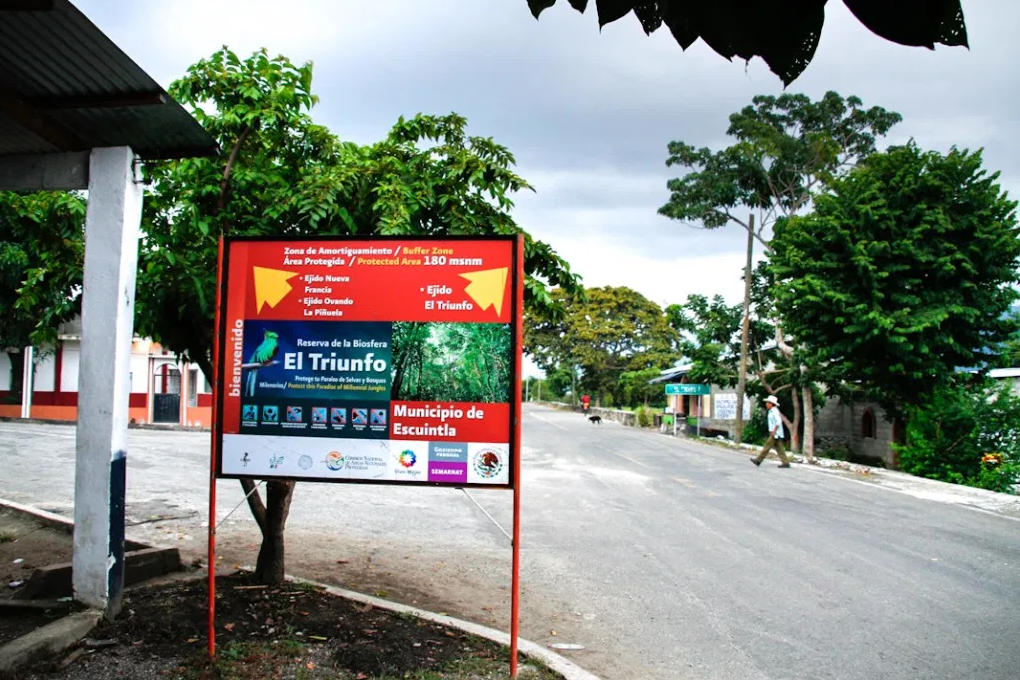
El Triunfo reserve is home to 10 different types of ecosystems, including one of the most threatened in the world: the cloud forest. This ecosystem is of vital importance because it retains water and supplies the Sierra Madre, benefiting mainly farmers and neighboring communities.
The Deception
The community of Los Cacaos, located in the mountainous area, is located in one of the highest places in the municipality of Acacoyagua, part of Soconusco. Water springs flow everywhere and supply other communities in the foothills of the mountain. The land contains a large amount of organic matter. There is no seed that does not come to life in these lands. Coffee, cocoa, rambutan, orange, papaya, pineapple, mamey, all kinds of vegetables, and without any extra fertilizer, much less toxic agro-chemicals.
The federal government approved a titanium mining concession on these lands. Of the 530 hectares that make up the community of Los Cacaos, 500 hectares were granted. The method was to be by means of subterranean tunnels, from the foothills of the mountain to the upper part of the town.
Alberto Villatoro, a farmer from the community of Los Cacaos, between a mixture of sadness and anger, remembers his childhood, how he walked on the silver-blue rocks without knowing that it was titanium that would later be exploited in his community. Today, the Chinese mining company, Honour Up Trading, as in many communities in the Sierra Madre de Chiapas, seeks to monopolize one of the largest titanium veins in Mexico. “Since I was a child I remember those metals in the river, on the path we kicked it, but we didn’t know it was titanium. Until by way of deceipt, some people agreed to sign on to the exploration process,” says Alberto Villatoro.
The first mining company arrived in the community of Los Cacaos, recalls the farmer Florentina Antonio Morales, in 2009 and carried out open-pit mining. Today, by action of the community itself, the activities of the Chinese group were paralyzed, but the concession is still in effect. “They came to deceive us, this is the truth. They promised us many things. They said they were going to build a market, a road, a park for the children. But all that was just words,” said Morales, a peasant farmer.
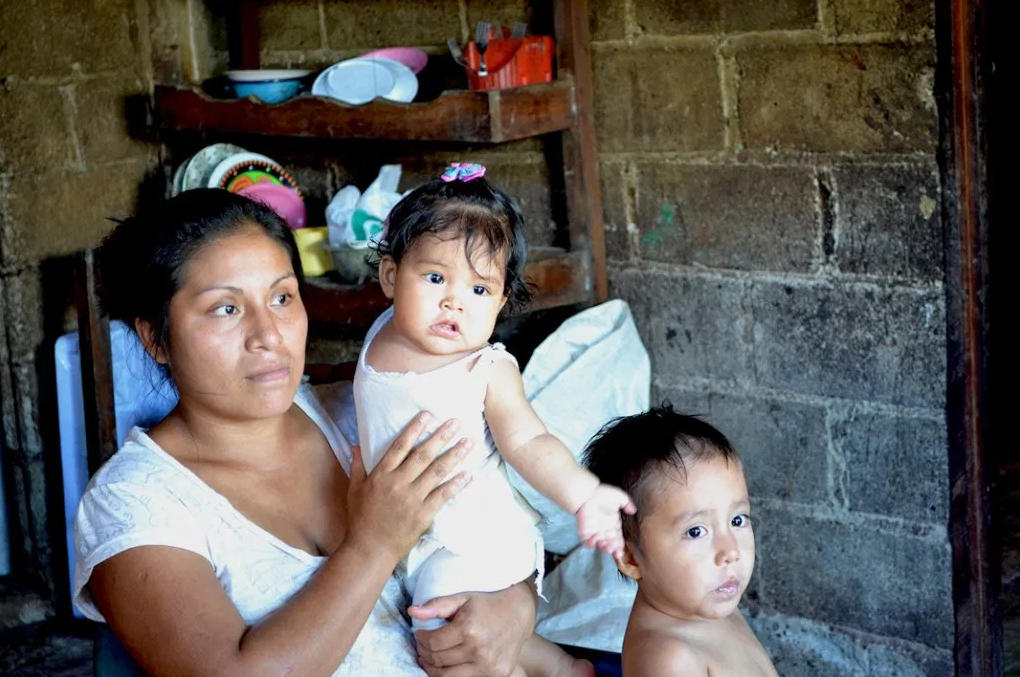
One of the strategies used by the company, says Morales, in order to obtain community support, was through the distribution of food pantries. “They are giving some money to the authorities and deceiving the people with a pantry, like the government does. The truth is, I don’t need food. I grow my cocoa, my coffee. We work and that’s how we live. No more. We want them to go away. They are affecting our harvest, our health and that of our animals,” says Florentina.
According to data from the REMA organization in Soconusco, in the municipality of Acacoyagua, where two titanium mines are in the process of exploitation, cases of liver, stomach and testicular cancer are five times more frequent in the region than they should be, and some of these cases have occurred in children. In addition, people who have bathed in the Cacaluta, Doña María and Cintalapa rivers, where the mine waste flows into, have skin irritations, sores and rashes.
Division of the Community
The community of Los Cacaos is an ejido, a rural property of collective use, peculiar to Mexico, resulting from the Mexican Revolution (1910). “An ejido is a community of 100 to 200 people – the ejidatarios in an equitable manner own a fraction of land. An ejido is not a property. The organization of an ejido is governed by the majority and for this we use the assembly. There is a commissariat that represents everyone, but the highest authority is the assembly. The commissariat is in charge of enforcing what is determined by the assembly,” explains Villatoro, one of the ejidatarios.
According to the farmer, there were irregularities on the part of the commissioner in the convening of the assembly and in the constitution of the minutes in which the concession was approved. “They did not comply with the requirements of the Agrarian Law. There were fewer signatures than necessary from ejidatarios who are legally registered in the national agrarian registry,” says the ejidatario. In addition, “the day the assembly was held, the authorities communicated that the exploitation would be for one year. When they brought the signed agreement, we saw that the truth was that it was for 50 years. The ejido authorities were already sold out to the company. Many people are afraid to say anything”.
“What we are seeing is that the companies have already begun to use a pattern with the communities, division. They divide, they buy, they use all kinds of pressure and blackmail. And this is the case with all extractivist projects in the country, which has generated a range of conflicts,” says Gustavo Castro.
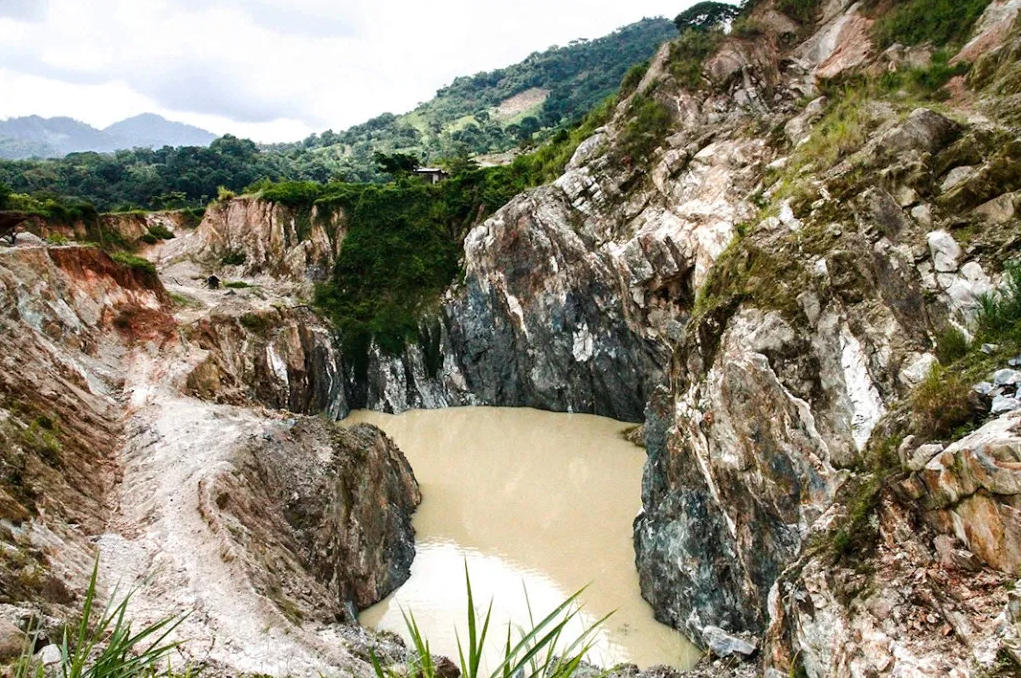
2 dollars per ton extracted
The reporting team had access to the contract of the Constitution that certifies the temporary occupation and service in the ejido Los Cacaos, made in 2013 between the authorities of that time and the company where the following are listed: the president of the ejido of Los Cacaos, Orlando Ramírez Tomás; the secretary, María Esther Ventura Ruiz; the treasurer, Edesa Reyna Tomás; president of the oversight council, Edgar Rusbel Pérez Pérez; and the Grupo Minero El Puntal SA, a company represented by its legal representative Víctor Manuel Espinoza Almaguer.
The contract establishes that “the ejido and the beneficiary agree on a payment of 500,000 pesos for the implementation of this contract, which will be paid in two installments, the first in December 2012 and the second in January 2013, as well as a royalty of 5 US dollars per ton extracted.”
Also, “the ejido and the beneficiary agree that the parcels where there the mineral is present will have to negotiate privately with the owner of said parcel so that a contract can be made individually in which it is agreed to deliver a royalty of 2 US dollars per ton extracted.”
Impacts Ignored
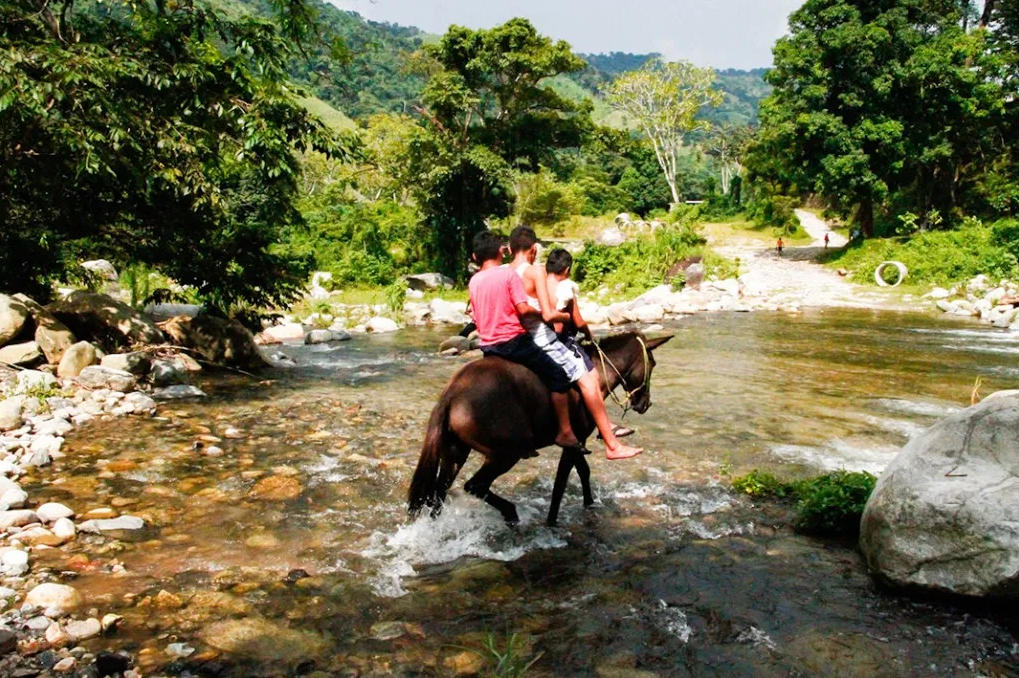
A document produced by the Secretary of Environment and Natural Resources of the Mexican government, which evaluates the Environmental Impact Study done by the company to obtain the concession, admits that the Los Cacaos project is in a region of high biodiversity and national importance. “Priority regions are areas that are used as a reference for national planning, due to their high biodiversity and significant functional ecological integrity.” Despite being considered a priority area by the agency itself, the secretariat approved the mining project.
On the other hand, the Secretary of Environment and Natural History of Chiapas issued its own evaluation, in September 2014, contrary to the mining project, issuing the following opinion:
“According to the review carried out, in accordance with the Ecological and Territorial Planning Program of the State of Chiapas, published in the Official State Newspaper n. 405, on December 7, 2012, the project to be developed called “Casas Viejas Mining Project,” to be developed in the municipality of Acacoyagua, is considered unfavorable, as the implementation of such actions would cause irreversible damage to the environment.”
This technical evaluation was ignored by federal authorities.
The Jewel
Another example is the concession issued to the Chinese company Honour Up Trading in 2013, called “La Joya”, established in the ejido of the community El Triunfo, in the municipality of Escuintla, Soconusco region, with an area of 207 hectares and valid until 2063.
“It is there, in the high part, in the ejido of El Triunfo where minerals such as titanium are found. We are worried because if these mines are developed, our ejido will be buried. In the municipality of Escuintla alone there are at least 8 concessions. It is the government that grants the concessions regardless of the well-being of human beings, nature and animals. We have not received any information. We enjoy clean oxygen and freedom, what is going to happen with mining?” said Francisco Bautista Hernández, secretary of the ejidal commission of the community of Independencia, Escuintla, Chiapas.

The Independencia ejido is the most organized town in the region. The community, along with its traditional authorities, is against mining. On several occasions they have denounced the owners of La Joya mining company. However, there are at least three other larger mining concessions in this same area that adjoin La Joya’s project and that remain silent for the time being. They are: “La Nathalia” mining, concessioned since 2012 to Helmar Antonio Faviel Solís; “La Fernanda”, concessioned to Evaristo Pérez Cano; and “La Ceiba” mining, concessioned to the company ATENMOV, S.A. DE C.V., who exploits gold, silver, iron and titanium in other regions of Chiapas.
The mining concessions follow a continuous line along the Sierra Madre de Chiapas, which indicates that there is a large vein of titanium primarily along this strip. Along the length of these mountains, a large number of rivers and streams flow down, which the communities use for drinking, bathing and agriculture. “We don’t want the Sierra Madre de Chiapas to be destroyed because we have a lot of vegetation and a lot of water. We have two streams and if the mine is exploited they will be contaminated and there will be many diseases, death of our animals and people,” says Francisco Bautista.
“In our communities we have never had problems with cancer before, but now we have registered many cases after the first mining operations. Young women who are pregnant are already having deformities in their fetuses, or there are also miscarriages. There are animals that are already dying. That’s why we don’t want the mines,” said Paula Velázquez, a health volunteer from the community of Independencia, Escuintla, Chiapas.
Local authorities warn about risks in La Joya.
In May 2015, the Secretary of Civil Protection for the Integrated Management of Disaster Risks for the state of Chiapas, at the request of the municipal president of Escuintla, Juan Carlos Méndez Córdova, issued an assessment of the risks posed by the operation of the La Joya mine.
The town of Independencia, according to the document, is located in a mountainous system with very steep slopes. The houses are self-built. The municipality is located on the foothills of the Sierra Madre de Chiapas mountain range, which makes the surface of about 80% of its land area rugged.
The document characterizes the region to be mined as High Risk. “The study area described here is classified as high risk, due to the natural conditions of the environment and the interaction of anthropogenic elements.” Nevertheless, the concession was granted by the federal government to the Honour Up Trading S.A. company.
International Pressure
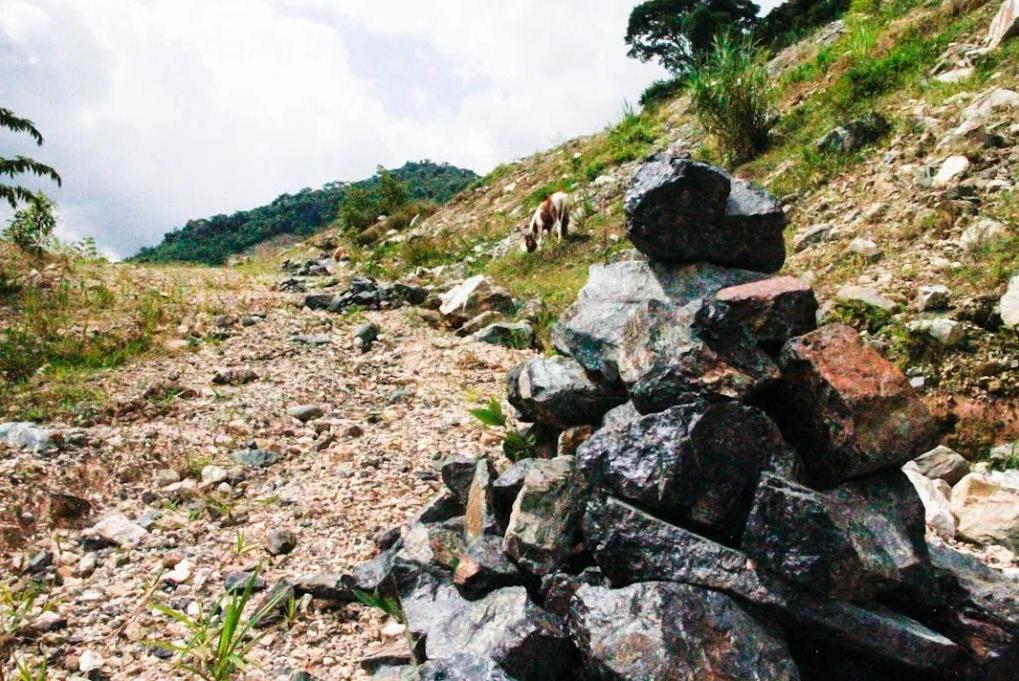
Under free trade agreements, all governments are required to guarantee foreign investments or they will be sued before the World Bank’s International Centre for Settlement of Investment Disputes (ICSID), which settles investment disputes between companies and nation states, explains Soto. “If States do not guarantee the investment they are accused of indirect expropriation. There is almost no mention of this condition. There are many lawsuits by transnational companies against governments because of laws that hinder investments, or because the government withdraws concessions. There are studies that show that 60% of the lawsuits filed by companies at ICSID are from the extractive industry,” Castro adds.
There is no country in Latin America that is not linked to a free trade agreement with the United States, China, Europe or Canada. “So what the governments do is to repress the people who are against these projects. It is easier to repress demonstrations than to pay millions of dollars to these companies,” explains the member of the organization Otros Mundos.
Governments must adapt the laws in their legal framework to facilitate investments. “Before the Free Trade Agreement (NAFTA), for example, 52% of the Mexican territory was communal property. More than half of the territory and its riches, such as gas, oil, gold, water, wood, were in the hands of the poor. With the package of structural reforms that the government has been promoting, indigenous and peasant territory is being privatized so that international investment can make inroads,” says Castro.
Free Territories
One important development has been the non-conformity of those in the Soconusco region, where 1 out of every 3 hectares is concessioned to the mining industry, since the beginning of this year 2015, various communities together with their authorities and inhabitants of the region have carried out countless demonstrations and brigades to inform about the impacts of mining exploitation.
As one of the concrete actions of this declaration, in September of this same year, inhabitants of the Nueva Francia ejido, municipality of Escuintla, Soconusco, agreed to prevent the mining development of the project called El Bambú, in charge of Obras y Proyectos Mazapa and El Puntal, which have been extracting titanium for more than eight years.
In August of this same year, several municipalities in the state decided to declare themselves in a general community assembly “Free of Mining.”. Nearly 300 representatives from the municipalities of Tapachula, Huhuetán, Mazatán, Suchiapa, Tuxtla Gutiérrez, Acacoyagua, Escuintla, Cintalapa and Tonalá made this decision due to the serious health effects that have already occurred in the region. “We join the more than two thousand declarations of territory free of mining in the country, as well as the more than 80 ejido and communal property acts and 30 municipalities of Guerrero, Oaxaca, Puebla and Chiapas that say no to mining,” Castro adds.

Published in Avispa Media November 30th, 2015. https://avispa.org/el-codiciado-mineral-que-amenaza-la-vida-de-los-pueblos-en-chiapas/
English translation by Schools for Chiapas.
